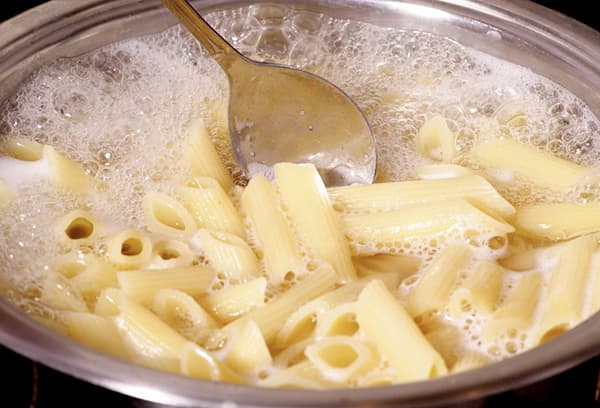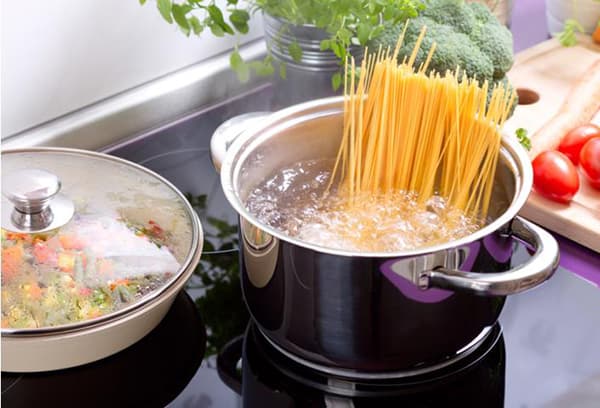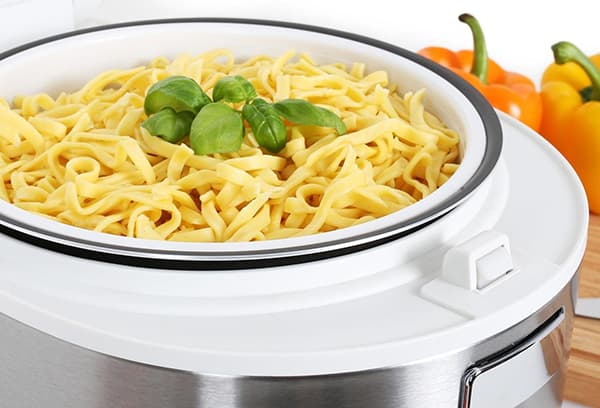How to cook different types of pasta in a pan and slow cooker?
Content:
Cooking is not possible without improvisation. Even simple pasta gets an unsurpassed taste if you add various spices, cheese, sauces, eggs, mushrooms, meat to them ... But at the same time, of course, there are unshakable fundamentals for preparing each dish - algorithms that contain consistency, time, proportions, temperature cooking. There is such an algorithm for pasta. Next, we will tell how and how much to cook pasta in a pan and slow cooker, how much water is needed and the better to flavor an appetizing side dish.
Basics of "pasta science"
Pasta is both simple and complex. Many beginning hostesses are afraid to approach them: suddenly they boil, turning into porridge, or stick together in one slimy lump?
Meanwhile, pasta is one of the most popular products on our table. How many dishes can be prepared with them:
- soups;
- navy pasta;
- pasta with various sauces;
- various casseroles;
- lasagna;
- spaghetti;
- salads;
- pancakes, etc.
If you know some simple rules, as well as observe the proportions and do not exceed the cooking time, there is nothing complicated in cooking pasta. For most dishes, pasta is cooked in a pan or slow cooker - as you like.
What should result from cooking? Soft, but somewhat resilient pasta, not digested, not molded into lumps, not damp. Although pasta al dente is perhaps the only exception. They are supposed to be slightly undercooked.
What is needed for cooking pasta? Regardless of whether it is planned to cook them in a pan or slow cooker, the initial ingredients are the same:
- the pasta itself;
- water;
- butter (very little);
- salt.
The addition of spices, cheese, sauces or other products depends on what kind of dish should be obtained.
Subtleties of cooking on the stove
How to cook pasta properly? The first thing they usually do when they are going to cook pasta in a pan is bring the water to a boil. And here inexperienced culinary experts lie in wait for two main pitfalls. If you ignore them, pasta after cooking will inevitably turn into a large clump of clumps.
- There should be enough water. And that means a lot. It is necessary. The proportions here are at least 1: 6. That is, 1 part of pasta needs 6 parts of water. Otherwise, during cooking, the water will thicken from the gluten contained in the flour.
- You need to salt water after boiling, before laying the product. This is also a must. Many salt water to speed boiling. But at the same time, it becomes denser, which is also favorable for further thickening.
For the fastest boiling of water, use other tricks that do not affect the subsequent taste of the dish:
- cover the pan with a lid of the appropriate diameter;
- set the maximum flame power of the burner;
- first boil water in an electric kettle, which is much faster, and then immediately pour into a saucepan and put on fire.
Pour pasta into boiling salted water carefully so as not to get burned. Then they are thoroughly stirred. Moreover, stir the pasta until cooked often and carefully. This is the third secret, allowing them not to crumple in the finished form. In addition, mixing will prevent pasta from sticking to the walls or bottom of the pan (followed by burning).
When boiling occurs again (that is, already with the product), the burner fire is reduced and the pasta is cooked until cooked.
And before readiness - is this, actually, how much? The answer depends primarily on the quality of pasta. Small and thin enough to boil for 4-5 minutes, pasta from durum wheat is boiled for about 7 minutes (by the way, you can not stir so often - they will not stick together, but it is better to put less oil, otherwise it will turn into porridge). The rest are cooked for 8 to 12 minutes. Usually on the packaging the cooking time is indicated, but it is better to try the pasta periodically, pulling out one at a time. After all, adjustments can be made by the power of the stove: one will cook the product a little faster, the other a little slower.
After cooking, the finished pasta is placed in a colander and washed thoroughly under hot running water (with strong pressure). This is the fourth rule for making pasta that does not stick together. However, if the paste is of high quality, washing is not required.
After that, you can add oil, spices and other products.
Spaghetti has its own nuances of cooking:
- They do not break, but put in a pan with a fan. Gradually, they themselves will sink into it completely.
- They do not need to be cooked to full readiness - this is just an al dente option.
- The cooked product is thrown into a colander without washing.
Features of cooking in a multicooker
This method is really special. Too small products are not suitable for a multicooker - they simply turn into porridge. And the process itself is radically different:
- put the pasta into the bowl right away;
- cold water is poured into them;
- salt and add oil, too, immediately;
- during cooking, the ingredients do not mix.
There should be enough water so that it covers the pasta layer by about one finger (this is about 2 cm). It remains to set the appropriate mode. It all depends on the model of the multicooker. Some have the "Pasta" or "Pilaf" mode, while others have "Steaming." All of them are allowed for cooking pasta. The nuance is time: it is different for each mode. Therefore, it is preferable to set it manually. 12–13 minutes is the optimal interval to get a good result.
After the multicooker, the finished product must be thoroughly washed under hot water.
Well, the last. For cooking pasta, like any other products, use only purified water: filtered or bottled. A cooking product is better not to choose from the cheapest, which even look "dirty gray and scary." Such products can be difficult to save, even observing all the technological subtleties, adding a lot of “camouflage” ingredients (such as mayonnaise, sauces, mustard, ketchup, garlic, pepper, various spices) or resorting to some other tricks.


